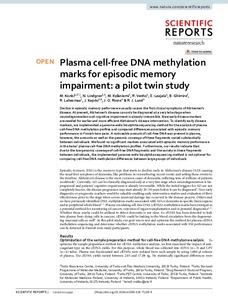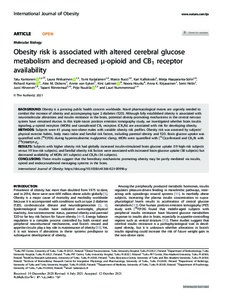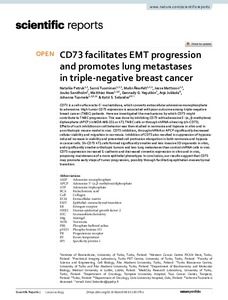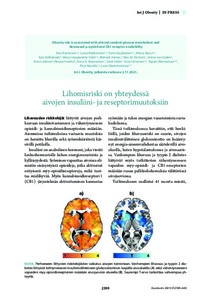Hae
Aineistot 1-10 / 11
Plasma cell-free DNA methylation marks for episodic memory impairment: a pilot twin study
<p>Decline in episodic memory performance usually causes the first clinical symptoms of Alzheimer’s disease. At present, Alzheimer’s disease can only be diagnosed at a very late stage when neurodegeneration and cognitive ...
68Ga-DOTA-E[c(RGDfK)]2 Positron Emission Tomography Imaging of SHARPIN-Regulated Integrin Activity in Mice
Sharpincpdm mice demonstrated increased integrin activity and vascularization in B16-F10-luc melanoma tumors, as demonstrated by RGD-based in vivo PET imaging. These data indicate that SHARPIN, a protein previously associated ...
Effects of Different Exercise Training Protocols on Gene Expression of Rac1 and PAK1 in Healthy Rat Fast- and Slow-Type Muscles
Purpose Rac1 and its downstream target PAK1 are novel regulators of insulin and exercise-induced glucose uptake in skeletal muscle. However, it is not yet understood how different training intensities affect the expression ...
Peripheral blood DNA methylation differences in twin pairs discordant for Alzheimer's disease
<p>Background <br></p><p>Alzheimer's disease results from a neurodegenerative process that starts well before the diagnosis can be made. New prognostic or diagnostic markers enabling early intervention into the disease ...
Obesity risk is associated with altered cerebral glucose metabolism and decreased μ-opioid and CB1 receptor availability
<h3>Background</h3><p>Obesity is a pressing public health concern worldwide. Novel pharmacological means are urgently needed to combat the increase of obesity and accompanying type 2 diabetes (T2D). Although fully established obesity is associated with neuromolecular alterations and insulin resistance in the brain, potential obesity-promoting mechanisms in the central nervous system have remained elusive. In this triple-tracer positron emission tomography study, we investigated whether brain insulin signaling, μ-opioid receptors (MORs) and cannabinoid CB<sub>1</sub> receptors (CB<sub>1</sub>Rs) are associated with risk for developing obesity.</p><h3>Methods</h3><p>Subjects were 41 young non-obese males with variable obesity risk profiles. Obesity risk was assessed by subjects’ physical exercise habits, body mass index and familial risk factors, including parental obesity and T2D. Brain glucose uptake was quantified with [<sup>18</sup>F]FDG during hyperinsulinemic euglycemic clamp, MORs were quantified with [<sup>11</sup>C]carfentanil and CB<sub>1</sub>Rs with [<sup>18</sup>F]FMPEP-d<sub>2</sub>.</p><h3>Results</h3><p>Subjects with higher obesity risk had globally increased insulin-stimulated brain glucose uptake (19 high-risk subjects versus 19 low-risk subjects), and familial obesity risk factors were associated with increased brain glucose uptake (38 subjects) but decreased availability of MORs (41 subjects) and CB<sub>1</sub>Rs (36 subjects).</p><h3>Conclusions</h3><p>These results suggest that the hereditary mechanisms promoting obesity may be partly mediated via insulin, opioid and endocannabinoid messaging systems in the brain.</p>...
Secretin activates brown fat and induces satiation
<p>Brown adipose tissue (BAT) thermogenesis is activated by feeding. Recently, we revealed a secretin-mediated gut–BAT–brain axis, which stimulates satiation in mice, but the purpose of meal-induced BAT activation in humans ...
CD73 facilitates EMT progression and promotes lung metastases in triple-negative breast cancer
CD73 is a cell surface ecto-5 ' -nucleotidase, which converts extracellular adenosine monophosphate to adenosine. High tumor CD73 expression is associated with poor outcome among triple-negative breast cancer (TNBC) patients. ...
Evaluation of [F-18]F-DPA as a target for TSPO in head and neck cancer under normal conditions and after radiotherapy
Background Many malignant tumours have increased TSPO expression, which has been related to a poor prognosis. TSPO-PET tracers have not comprehensively been evaluated in peripherally located tumours. This study aimed to ...








